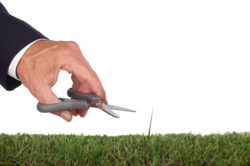Editing: The perfect ten
Expert: Lee Dickinson

Fixing writing mistakes is often plagued by errors.
Proofreading and editing. The epitome of written perfection. You’d think.
But the job of gaffe removal’s in danger when even the word ‘proofreading’ is abused. You’d be worried if you paid me to clean your home then found me dismantling your boiler. It’d be more troubling if the boiler wasn’t broken. That’s what some ‘proofreaders’ do. I know, because I’ve been called in to mend the wreckage from what was supposed to be copy-editing. They’re distinct, and if that’s not explained, entrust your words instead to someone who knows the difference.
There are at least nine other copy-editor/proofreader essentials. Let’s start with that vital definition.
The perfect 10. Your copy-editor or proofreader should:
1: Know the difference between copy-editing and proofreading
Copy-editing includes all of proofreading’s spelling, grammar, punctuation and formatting corrections, but adds a deeper look at the likes of syntax (sentence structure). Great copy-editing will make your writing organised and succinct. A proofreader will dust the front of the boiler and check the buttons all work after the copy-editor’s had his spanners out. Proofreading can only be done after copy-editing, because it involves reading ‘proofs’ which are the final part of the writing process. Copy-editing costs more.
2: Know their stuff
Some ‘proofreaders’ do no more than run a spellchecker, and here’s why computer checkers fail you. Many of these ‘experts’ have howlers even in their advertising copy, which tends to appear on the likes of Fiverr and free social media platforms. If they’ve spent no time on something as basic as getting a website or a free LinkedIn profile, will they spend enough time fine-tuning your hard work? Some aren’t being dishonest, but think being able to read qualifies them for the job in the same way, presumably, holding a brush makes them Picasso? Like any professional, your copy-editor or proofreader should have relevant experience.
3: Print it out
Copy-editors and proofreaders should confine their planet-saving acts to outside the office. Inside it, proper error checking can only be done on paper. The eye works differently on screen to the printed page, which reveals much more.
4: Proof, not read
You can ‘get lost in a good book’, and great proofreading vanishes if proofing becomes reading. When the brain’s absorbed in the writing, both eyes aren’t fixed on potential errors. One way to avoid this, depending on the type of project, is to read sentences forward but in reverse order from the bottom of the page.
5: Be polite and collaborative
Clients and copy-editors can clash. I’ve stepped in when a relationship has soured and, on reading the previous editor’s margin comments, the reason’s obvious. A copy-editor’s recent notes to an academic included the likes of: ‘This has come up a few times. Be careful.’ It wasn’t even clear where the client needed to ‘Be careful’. He was paying the copy-editor for that care, not to be treated like a naughty child.
6: Double check
A great copy-editor presumes nothing. They’ll check even the basics, often using more than one trusted source. It’s time-consuming, but an indicator of the sort of quality service which has saved many a writer from professional embarrassment.
7: Be consistent
Correctness has to be paired with consistency. ‘Organisation’ should never become ‘organization’, and vice versa, which calls for extra vigilance amid the use of American spellcheckers. Adopting a style book to implement at the outset will help. If your proofreader uses Oxford style, they should check your preference and be prepared to adapt to a US style such as AP. You’re in charge.
8: Watch for tense changes
They’re sneaky. If typos are the smash-and-grab errors, tense changes are the opportunists. The only answer is to be vigilant, and this one’s top of my sentence-by-sentence checklist.
9: Be a writer
You wouldn’t take driving lessons from someone who’s read about the process from a book but never changed gear. Please, don’t let non-writers copy-edit your words.
10: Use ‘fresh eyes’
Your eyes aren’t as alert as they were at the start of these 700 words. After 10,000 words, there’s even more danger of errors sneaking through the haze. Regular breaks help, but the key vigilance weapon is coming back to a project another day with eyes rested and watchful. Go on, let your copy-editor take a rest. That way, they’re more likely to score a perfect ten.



